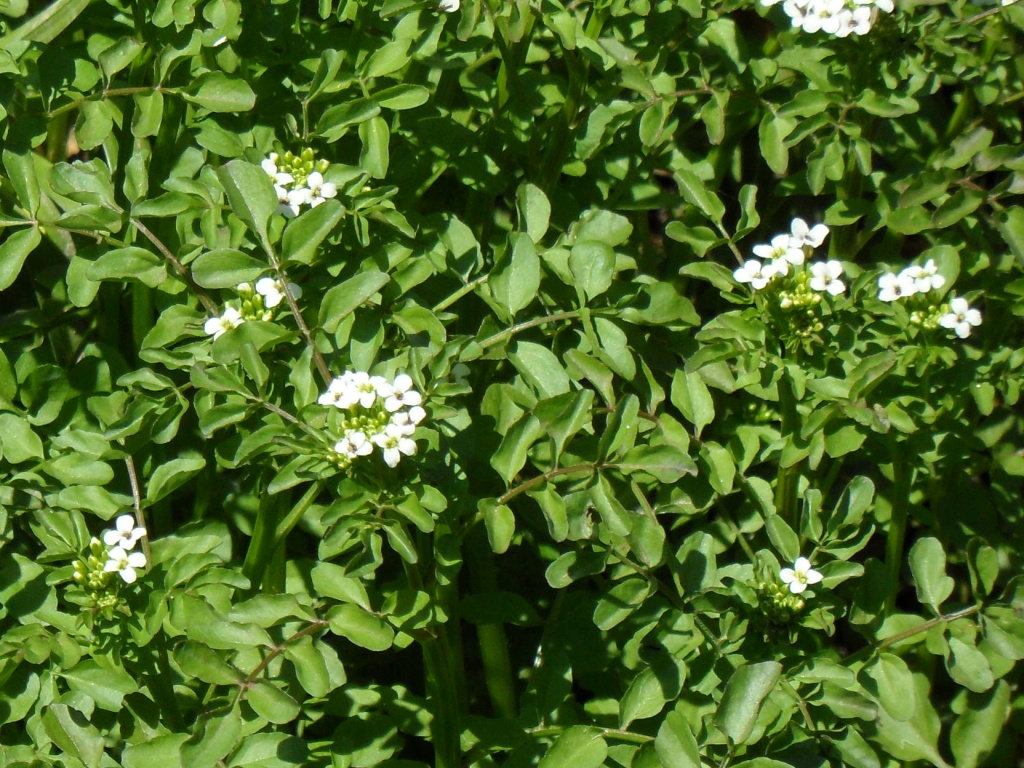Nasturtium microphyllum
Boenn. ex Rchb.Perennial, decumbent, stoloniferous, growing in mud or shallow water; stems to 60 cm long, hollow, glabrous. Leaves pinnate, mostly to 10 cm long, becoming smaller towards inflorescence, lateral segments round or broadly elliptic, glabrous. Sepals 1.5–3 mm long; petals 4–5 mm long, white; stamens 6. Fruit spreading, narrow-oblong to linear, curved, 15–30 mm long (excluding style), 1–2 mm wide; style up to 1 mm long; pedicels spreading, 9–15 mm long; seeds in 1 row (sometimes irregularly 2 rows) per locule, coat reticulate with c. 100–150 depressions per face.
GleP, Brid, VVP, GipP, OtP, WaP, Gold, CVU, EGL, EGU, HSF, MonT, VAlp. Also naturalised SA, Qld, NSW, Tas. Flowers mostly summer.
The number of depressions in the seed surface is the most reliable character for separating N. microphyllum from N. officinale, however, N. microphyllum tends to have longer fruits with seeds in 1, or 2 somewhat irregular, rows.
See note under N. officinale regarding hybrids between these two species.
Entwisle, T.J. (1996). Brassicaceae. In: Walsh, N.G.; Entwisle, T.J., Flora of Victoria Vol. 3, Dicotyledons Winteraceae to Myrtaceae, pp. 399–459. Inkata Press, Melbourne.
 Spinning
Spinning

